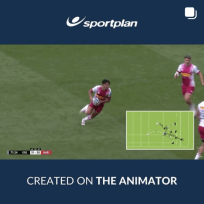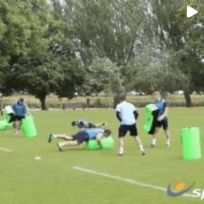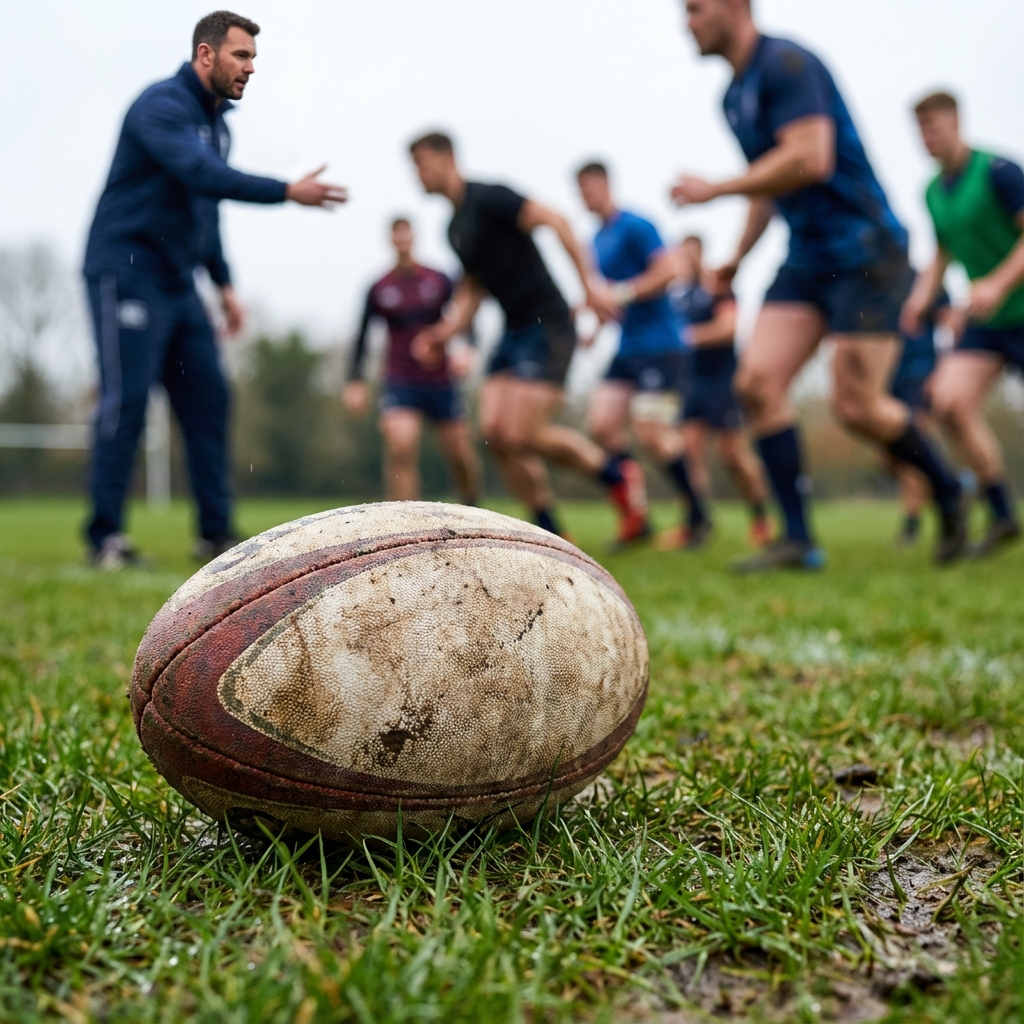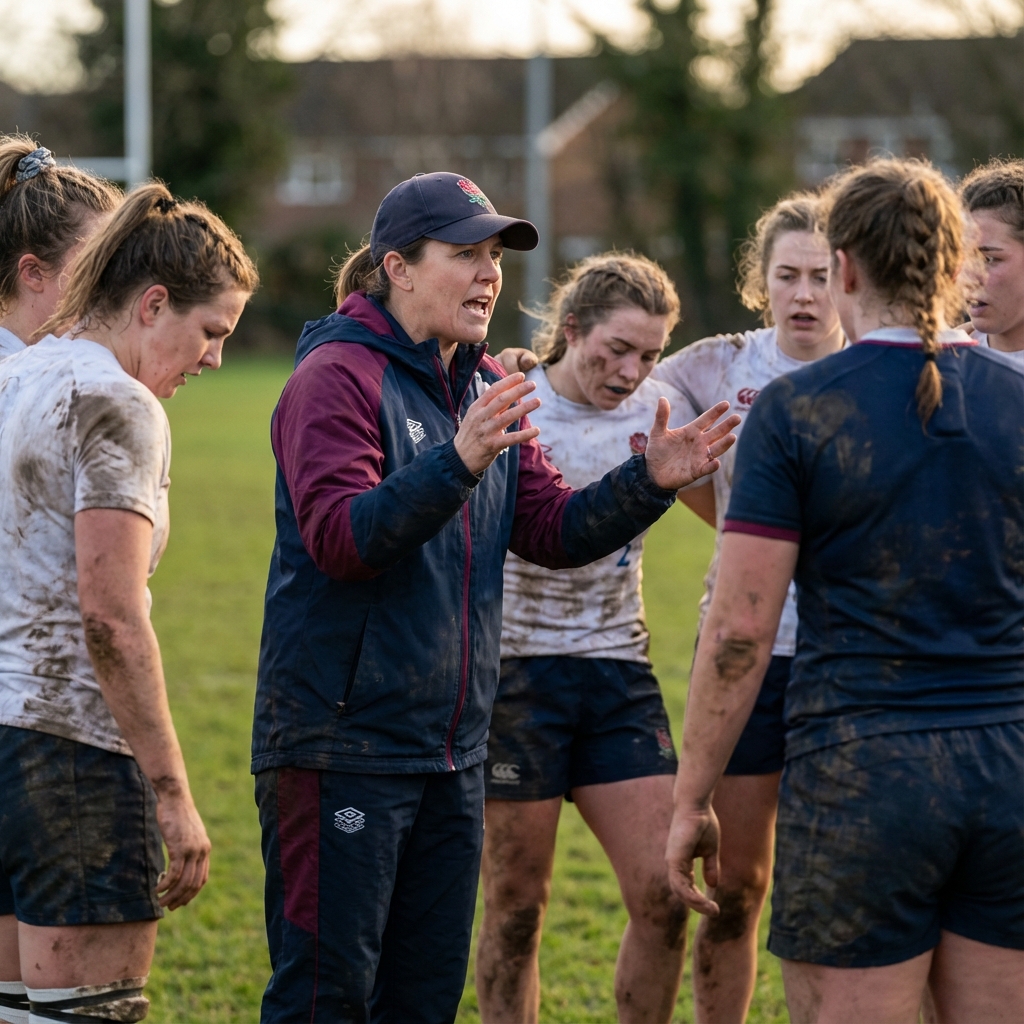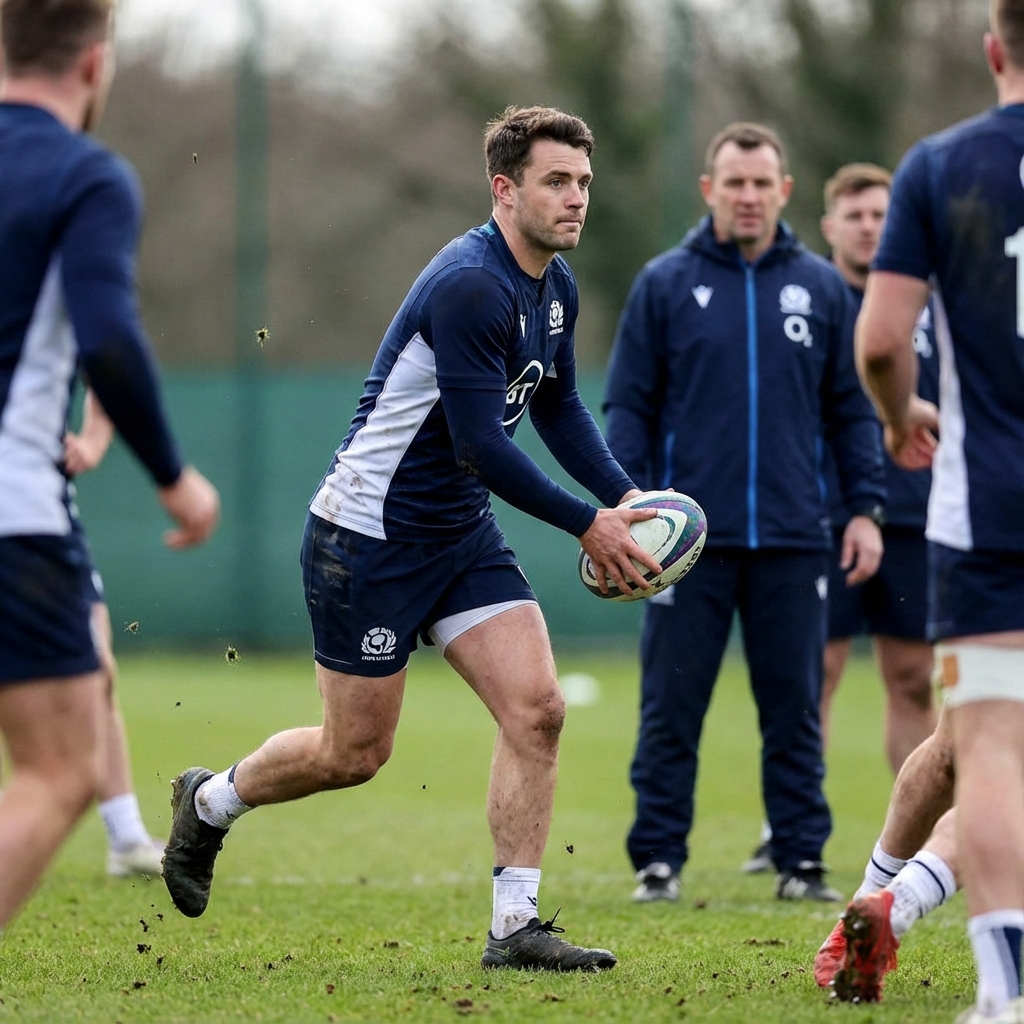i coach collegiate womens rugby...any suggestions for?
i coach collegiate womens rugby...any suggestions for tackling sessions in practice - my girls are very hesitant to "hurt" each other. we have tackle dummies, but that just isn't the same...
Dana
The trick is to make tackling fun! Then the players won't be thinking so much about the contact!
Here is a simple drill which is fun to do as well as some key points to emphasise. There are more drills relating to tackling in our drills section.
Bulldog on knees:
Players line up on their knees - 5 or 6 tacklers face them also on their knees. On "Go" the players have to get past the tacklers - no one can get off their knees and no hand off are allowed.
It is better if players have a ball in two hands throughout.
Swap the tacklers every time so everone has a go. Offer prizes to to tacklers who are successful!
Here are some key points on making the tackle:
If you go into a tackle half heartedly it could mean that you are not in the correct position and you could get hurt so it is important to start by practising tackling in stages. You need to be confident that you have mastered each stage before you progress to the next one:
Stage 1 Start on your knees and have the ball carrier you are tackling on their knees as well
Stage 2 The ball carrier holds the ball in both arms â this is important as they should not put their arm out to stop themselves hitting the ground â rather they should roll onto the ground using their waist then shoulder
Stage 3 Then once you are comfortable with the technique you could get the ball carrier you are tackling to walk slowly past you, still with both of you on your knees
Stage 4 Again, once you are comfortable with this, you could move on to having the ball carrier walk past you whilst you are in a crouch position to make the tackle
Stage 5 Move on then to having the ball carrier jog past you whilst you crouch and then tackle
Stage 6 When you are feeling confident try to have both of you jogging but make the ball carrier jogs close enough for you to tackle them
Make sure you have the correct technique at each stage before moving on.
There are three main types of tackle:
- The side tackle
- The front tackle
- The rear tackle
The side tackle
This tackle is made when you are running in to tackle the ball carrier from the side. The most important point to remember is to put your head behind the ball carrier and keep it there throughout the tackle â you donât want the ball carrier landing on your head!
Key points:
- Make sure you are to the side of the ball carrier
- As you go to make the tackle make sure your head will go behind the ball carrier
- Make sure you have a low body position as you near the ball carrier
- Keeping the eyes open, position the head behind or to one side of ball carrier (cheek to cheek)
- Make contact with the shoulder on the ball carrier's thighs
- Keep the chin up and the back straight
- Squeeze the arms tight while driving with the legs
- Roll to finish on top and get back to feet quickly
I hope this helps you and good luck
Simon

Bulldog on knees
DESCRIPTION
Bulldog on knees
DESCRIPTION
I don't wish to sound presumptious, but have you taught the players to fall correctly before coaching tackling? If not, why not enlist the aid of a Judo coach, and ask him to help? I've found that basically there's two types of fall; that which resembles the Judo fall; back of hand / shoulder / back etc - all in a gentle curve, and the other the type of 'parachute jump' landing, that involves outer knee, hip, lower back etc. Get the players to start crouching or even kneeling to start to lose the fear of ground contact. Maybe also allow the tackled player to carry two balls thus avoiding sticking a hand out to ground (weight of two bodies on one hand/wrist is a recipe for broken wrists). Help them improve their footspeed, and insist that they are close to the ball carrier. I use a Hula Hoop, and the tackled player has one lead foot in it, the tackler must place one foot in it also, ensuring same leg and shoulder/neck. If possible get each one to bring along a spare pair of socks, and put these over their hands, so they can't simply grip the ball carrier and reel her in. (I call this the Fisherman Tackle - to be avoided). Maybe show the players how the force lines work, and explain that the spine is the transmission rod that allows the legs to power the tackle. Ask them to show you how they would carry a bag of potatoes home. Some will try in their arms, but the most successful will carry in the place where the shoulder and neck meet. Expain that 'moments about a point' applies, and the nearer the neck, the more efficiently the power will arrive from the legs. Finally; here's a really different 'outside the box' idea. Get the players to tackle to music! I know it sounds strange, but it works for me! Good luck!
i coach men's and women's collegiate rugby and there is a clear difference in tenacity when initially teaching tackling to new players. i agree with and emphasize many of the same elements sited by the previous posters, but the reality is that tenacity in tackling for women is far more psychological as it is counterintuitive and/or simply foreign to female athletes in america. in an attempt to troubleshoot this issue a few years ago (and much to our track coaches chagrin) i commandeered his pole vault mats. after covering side on tackling progressing from knees to feet, emphasizing cheek to cheek, driving with shoulders and powering through with legs and core we move to the dump tackle. this is where the pole vault mats come in handy. we set up ball carriers with their backs to the sloped mats and with a line of tacklers opposite them just a couple/few meters out. this has been the single greatest tool that has helped me to teach not only safe technique, but to get the women to overcome their concern for their fellow teammate in live tackling. this *drill* with the mats has empowered the women to become offensive and tenacious in their tackling and it now translates when we take tackling back to the field. one other technique that has been useful (not new or original), is having tacklers in grids or channels have a tennis ball in each hand. this reinforces the synergy and necessity of the shoulder, core, and legs doing the work in the tackle -- not the hands. hope this helps.
LIke to idea of the tennis balls in each hand and the hoola hoop idea to get into the right position to make anad take a tackle. Thanks both!
I play a game called king of the hill with the girls a school. In pairs they start at the top of a bank. 1 player rolls the ball down and they both chase after it. the player that picks up the ball then has to get up the hill without being tackled. This way they have less distance to fall to the ground and there is not the fear of being fallen on as they are going up hill.
Dana To add to Andy's answer regarding the fall. If you have brand new players who may be reluctant to even fall start their initial tackle fall and contact practise on the landing matts of a high jump or pole vault area. It's safe, provided they are not near the edge, and the softer landing area should help your players focus on the tackle fall and tackle techniques rather than on the contact with the ground/ each other. Hope this helps
Ithe fall is important although the head is behind ball carrier









